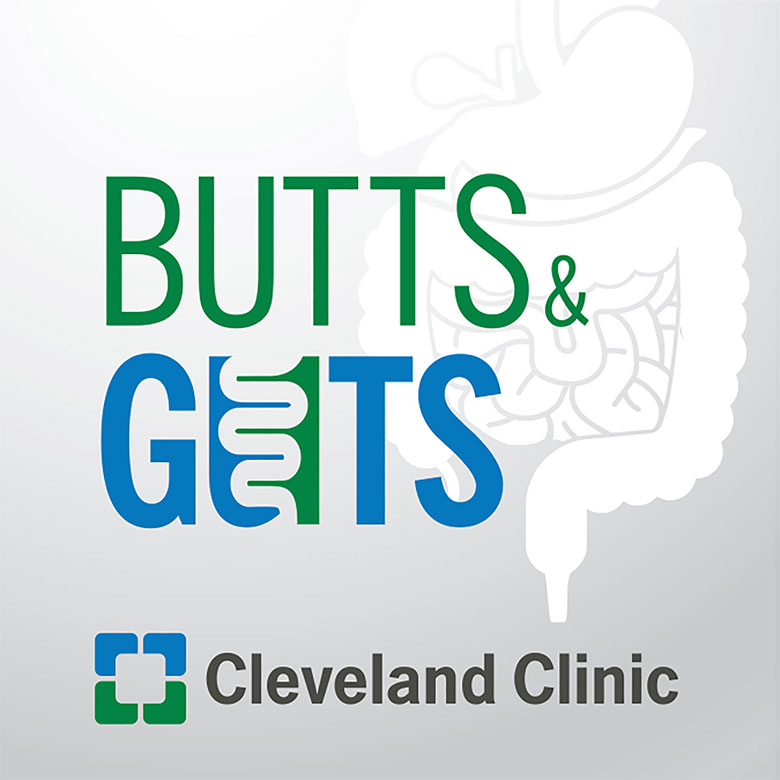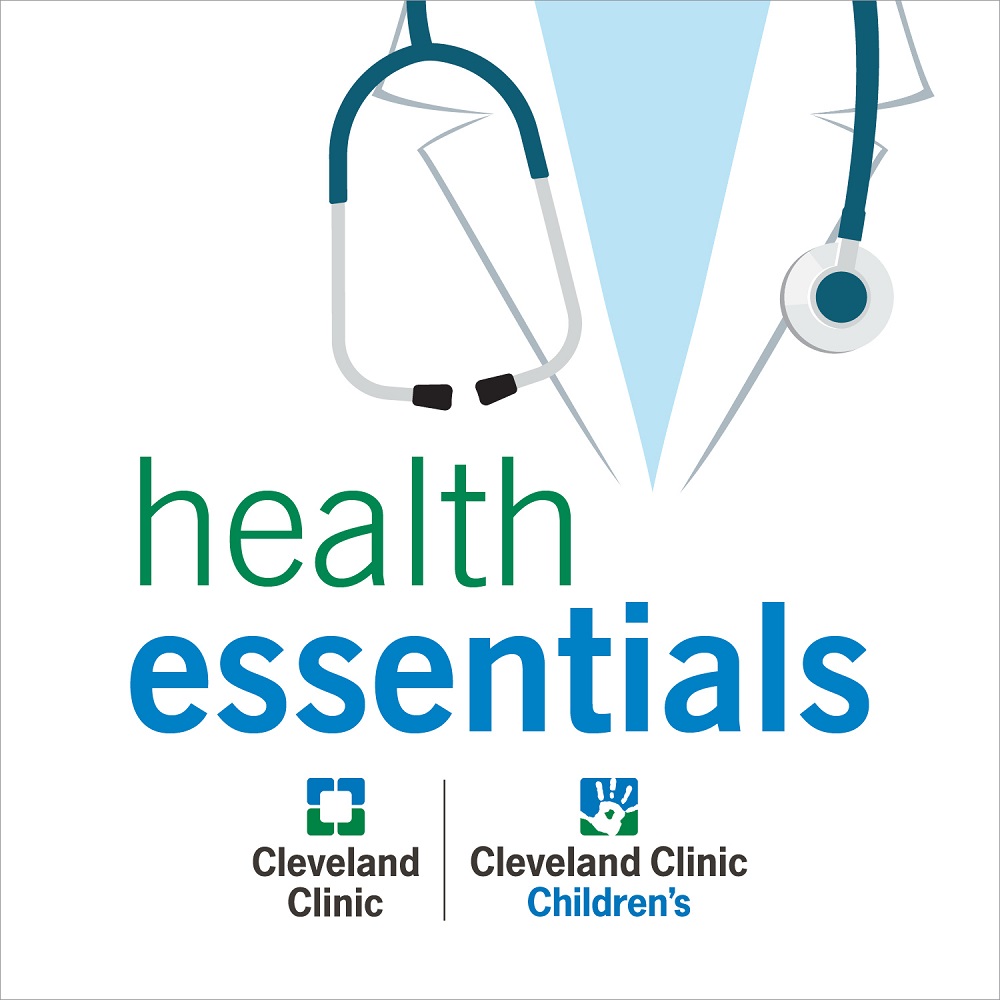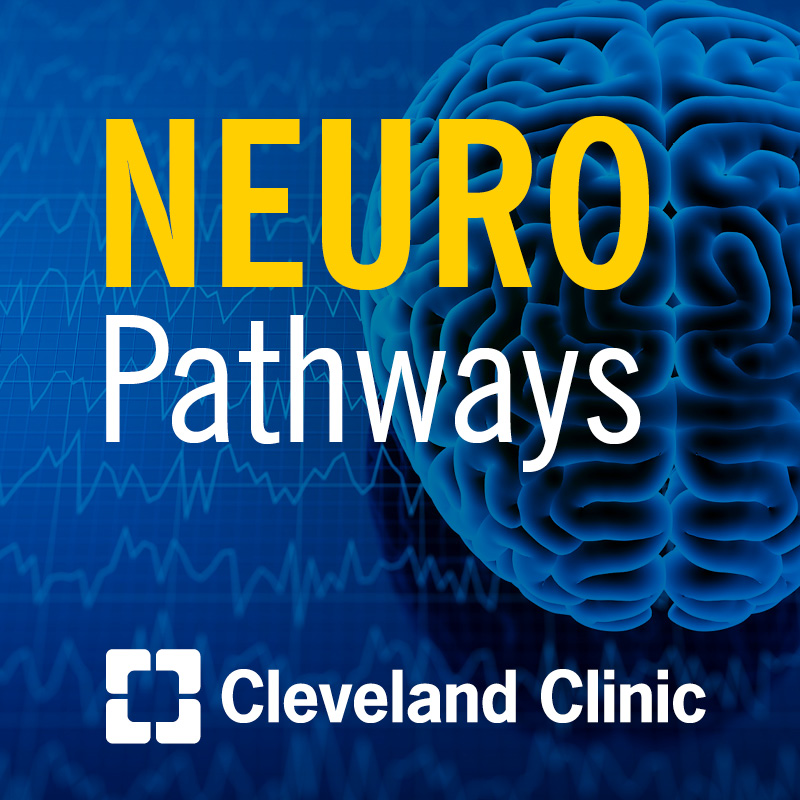Breathing New Life Into Cancer Treatment: Inhaled KB707

Wen Wee Ma, MBBS, Enterprise Vice Chair for Research and Director of the Novel Cancer Therapeutics Center, joins the Cancer Advances Podcast to discuss a phase 1 trial of KB707 presented at ASCO 2025. This innovative therapy delivers IL-2 and IL-12 directly to the lungs through inhalation, aiming to minimize side effects and improve outcomes for patients with lung tumors. Dr. Ma shares early trial results and what they could mean for the future of cancer treatment.
Subscribe: Apple Podcasts | Podcast Addict | Buzzsprout | Spotify
Breathing New Life Into Cancer Treatment: Inhaled KB707
Podcast Transcript
Dale Shepard, MD, PhD: Cancer Advances, a Cleveland Clinic podcast for medical professionals, exploring the latest innovative research and clinical advances in the field of oncology. Thank you for joining us for another episode of Cancer Advances. I'm your host, Dr. Dale Shepard, a Medical Oncologist, Director of International Programs for the Cancer Institute and Co-Director of the Sarcoma Program at Cleveland Clinic. Today, I'm happy to be joined by Dr. Wen Ma, the Enterprise Vice Chair for Research at Cleveland Clinic Cancer Institute and Director of the Novel Cancer Therapeutic Center. He was previously a guest on this podcast to discuss the Oncology Pharmacovigilance Clinic, and that episode is still available for you to listen to. He's here today to talk about the results of a trial presented at ASCO 2025, targeting lung tumors with KB707. So welcome back.
Wen Wee Ma, MBBS: Thank you, Dale. Glad to be back. Thank you for the invitation again.
Dale Shepard, MD, PhD: Sure. Remind us a little bit about what you do here at Cleveland Clinic, just kind of general overview.
Wen Wee Ma, MBBS: Yeah, so I'm a medical oncologist, so I treat GI cancers. I'm also a phase one drug developer or investigator, in addition to taking care of cancer patients. So my research interest is really looking at new and innovative drug trials.
Dale Shepard, MD, PhD: And so one of those innovative drugs and a lot of the things we're studying, these early phase trials are still letters and numbers. They don't have names yet.
Wen Wee Ma, MBBS: Absolutely.
Dale Shepard, MD, PhD: And that would be KB707. We're going to talk about a trial related to that. What exactly is KB707?
Wen Wee Ma, MBBS: Yeah, so you took a step back and... We know that for a long time before Pembrolizumab and Nivolumab, the immune therapy came onto the scene. We have a hint that human immune system has this anti-cancer effect, and the fact that we know that is because high dose IV IL-2, interleukin-2, is approved by FDA because it's been shown to work in small cell of renal cell carcinoma and melanoma. So we know that, but unfortunately, the interleukin-2, when it's given, even though you work, it does have a lot of side effects, including capillary leak syndrome, hypotension, that patients need to be in the hospital. So there's definitely a lot of side effects when we give interleukin-2 by IV. So the other interleukin that has been of interest and promise is interleukin-12. So interleukin-12, in the laboratory, has been shown to work as the anti-tumor agent, but clinically, it's just very difficult to develop this interleukin-12 as an anti-cancer treatment in human patients.
So KB707 is designed as a replicative defective herpes simplex virus. So in the natural world, a herpes simplex virus would insert itself into healthy cells and hijack the cell machinery. So KB707 take that herpes simplex virus, make it not able to replicate in the human body, so safety, and then insert genes that can encode for interleukin-2 and interleukin-12. So in other words, this KB707 is designed as a pocket simplistically to deliver the gene for IL-2 and IL-12 into human body. So in this particular clinical trial, these pocket of genes are actually delivered by breathing in by inhalation. So as we discussed just now, when we give the interleukin-2 and 12, systemically, by IV, it can cause a lot of side effects. So the idea is that if we can package this and deliver it to where it need to be, we can avoid causing this systemic side effect. So KB707 is this pocket of IL-2 and IL-12, and this particular clinical trial is looking at delivering it by breathing it in, by inhalation method.
Dale Shepard, MD, PhD: As people sort of think through that, how exactly does that work? I mean, people think of inhalers and things like that. How is it given?
Wen Wee Ma, MBBS: By inhalation is kind of an interesting concept in oncology because most of the time we think about chemotherapy as given IV or oral, and then there's also intratumoral injection, which in that sense is given to where it need to be. So for this particular clinical trial, the way it's given is almost like a nebulizer treatment. So for patients with reactive airway disease like asthma, they will have inhaler albuterol. So the way that it's administered is pretty similar to that. So it's been nebulized and the patient's breathing in.
Dale Shepard, MD, PhD: And then I guess just from, again, a very practical standpoint, it's pretty simple if someone's going to get an IV therapy, have a research nurse start an IV, it's given to the patient. How do we protect people giving the medication from getting medicated themselves?
Wen Wee Ma, MBBS: Yeah, that's absolutely important. So for this study to really get to where it is to be given to the patient, and also for protecting the research staff and the nurses or the doctors who's involved, and even the friends and family members who's accompanying the patient, in order to protect that, the clinical trial is actually reviewed by our biosafety committee here during the regulatory. And things they look for is exactly like what you say, is there a hazard to people around the patient? So as I say, you know, when I started describing KB707, it's a herpes simplex, so it's actually a pretty common virus and it's also rendered defective in its ability to replicate. So with that, the thought is that you're going to the patient and you wouldn't be able to multiply itself. So that's kind of the mechanism behind it. And then we have it reviewed by the biosafety and there's experience in dealing with this kind of viral particles.
Dale Shepard, MD, PhD: So just sort of thoughts about the drug and delivery and things, and then we'll get into some results. I guess just conceptually, if you're giving something by IV, it goes right in the bloodstream, but in many ways, if you're giving something by inhalation, the reason that works for some drugs is because the alveoli, lots of vascularization. Is it just that the peak levels of drug don't get the same peak levels as you would directly as IV?
Wen Wee Ma, MBBS: So this are fantastic question. So how... the reason we're doing the clinical trials is to understand how this viral particle would affect the human body. Conceptually, obviously, in oncology, we use drugs, we use molecules, monoclonal antibodies that we can measure in the bloodstream or in, let's say, the alveoli, right? So in the alveoli. So this particular agent is actually so-called infect the cells in the lung, alveoli and so on and so forth. So that's one thing to consider if we're going to measure where the viral particle is. And the other thing to think about is also that the reason we are giving this gene for IL-2, IL-12 is to induce immune responses. So one of the things that the clinical trial should look at is to measure those chemicals that might be induced and produced by the action of IL-2 and IL-12, which we have looked at interferon gamma. So we have measured the interferon gamma in the blood to see whether we do see the kind of immune reaction that we expect from this two interleukin.
Dale Shepard, MD, PhD: This particular trial, what patients were enrolled? Give us a little bit of an idea what the study design was.
Wen Wee Ma, MBBS: Similar to any oncologic phase one trial, so this would be enrolling patients with advanced solid tumor who existing treatment have exhausted existing treatment. Because of the mechanism and also the way that this agent has been delivered, which is by inhalation, we're focusing on solid tumor patients who have predominant lung disease. So they could be, obviously, lung cancer with lung involvement, but it can also be sarcoma with lung involvement. So the patients that we are selecting are those patients who is likely to benefit from inhaling this particular treatment.
Dale Shepard, MD, PhD: So how many patients ended up being enrolled? And give us a little bit of an idea how well it worked.
Wen Wee Ma, MBBS: The clinical trial is actually still ongoing. In the abstract, in the poster, we reported the experience of about 39 patients. We reported on the experience of monotherapy given by itself in 39 patients of different tumor types. And out of that, there are actually 11 patients with lung cancer in them. And otherwise, you also have representation from head and neck cancer and breast cancer.
Dale Shepard, MD, PhD: All right. Did patients tend to tolerate the therapy well?
Wen Wee Ma, MBBS: So yeah, that's a good question. In this particular study, in general, the patients there's no grade three and worse event, so nothing that is... those limiting, so to speak. There are grade one to two side effects adverse events that include, because it's an immune modulatory agent, we do see cytokine release syndrome, we do see chills, those things that is associated with interleukin reaction and interferon. Because it's by inhalation, we do see patients with dyspnea, shortness of breath for a few days. That's reversible. And also nausea, vomiting is part of that as well. So the study has devised a good regimen of antiemetics, including steroids to help manage all these side effects.
Dale Shepard, MD, PhD: And so certainly fewer side effects than you would've expected from IV interleukin-2.
Wen Wee Ma, MBBS: That's a good point, Dale. Yes, absolutely. So it's by inhalation. The idea is that what we observe is that we're able to deliver a higher dose to the lung than if we're going to give IV.
Dale Shepard, MD, PhD: And then you had mentioned that IL-2 is oftentimes given and requires hospitalization. What were sort of the requirements for the study in terms of keeping an eye on patients for safety?
Wen Wee Ma, MBBS: So any phase one trials, we keep a very close eye on anything that might be bad. So the patients are seen on a weekly basis, and actually for the first few doses, the patients is seen the day after the treatment as well, to continue to monitor them very closely. And for some patients, nausea is issue. So because we're seeing them on a daily basis, initially, we're able to intervene and help the patient through that.
Dale Shepard, MD, PhD: But certainly not the requirement for hospitalizations that you would see with IV therapy.
Wen Wee Ma, MBBS: Oh, yes, yes. Yeah, absolutely. Yeah. So as you alluded to, high dose IL-2, we have to, if we, you know, old enough to remember, we have to admit the patients into the hospitals, they have to stay in the hospital for quite a few days. For this particular treatment, with KB707, we do it as outpatient.
Dale Shepard, MD, PhD: As you approach a patient, these are patients who've already had other therapies, they've had oral medications, and they've just gone and taken pills. They've had IV therapies. What were patient impressions like, "You want me to do what?"
Wen Wee Ma, MBBS: That's actually interesting because it's such a different way of giving anti-cancer treatment that even, yeah you know, and Dale, you are one of expert phase one investigator, I think all of us are quite surprised, "Oh, you what? You are breathing in. Let me look at this clinical trial." But I think it's fair to say that, and I appreciate our patients being very open. And actually, it's been received really well. It's received really well by the patients. And I think all of us in the Novel Therapies Clinic, you and I, we see this patient and we're amazed at how well they're tolerating this.
Dale Shepard, MD, PhD: Yeah, absolutely. Tell us a little bit about how effective it was to shrink tumors.
Wen Wee Ma, MBBS: Yes. So we have to bear in mind that the reason we are doing inhalation is to deliver this treatment directly to the tumor. It's directly to the tumor. And as we discussed before, we are focusing on patients with lung predominant disease, i.e., it could be a colon cancer with predominant lung. Obviously, we are very interested in lung as well. So we did see shrinkage in some of the patient's lung lesions. So we did look at 11 patients with non-small cell lung cancer and observed that, indeed, we see shrinkage of those tumors. By research criteria, the response rate was in a range of 27 to 28% at initial assessment, and later on, obviously, some of this patient has been on that for a while. That response rate increased to another by five points when we observe the patient over the long term. So based on that, there's definitely indication that the treatment is achieving what we thought that we will see, the initial hypothesis that affect the tumor that we're able to deliver the drug to.
Dale Shepard, MD, PhD: And as I recall, if you included patients with stable disease or disease... They needed disease to be growing to come into the trial. Stable disease took that number of people that responded to like three quarters of the patients.
Wen Wee Ma, MBBS: Absolutely, absolutely. And it's kind of interesting because there you're bringing it up. So as drug developer, you and I, we're eternal pessimists or eternal like, hahahaha. We are always looking at stability. Absolutely. So these patients, they have exhausted existing treatment, and when we see a response of your stability or disease, that, to us, is exciting thing to say, "Well, maybe this should go further."
Dale Shepard, MD, PhD: There actually was also, again, heavily pre-treated patients. They actually had a pretty long duration of response.
Wen Wee Ma, MBBS: Yes, absolutely. So I think at this time, being in the clinical trial, we are a bit cautious. But yes, we have seen patients being on it for multiple cycles, four to six months. Yeah. But obviously, we need to continue to do the trial.
Dale Shepard, MD, PhD: Study included people with lung predominant disease, but that means that they also had disease outside of the lung perhaps. Patients want all of their disease treated. So what kind of responses we're seeing in non-lung, liver, lymph node, things like that.
Wen Wee Ma, MBBS: Yeah, yeah. So it's interesting that you bring this up because of the way that we think that this drug work, and by inhalation, despite what we see in the shrinkage of those lesions in the lung, many of these patient actually has extra pulmonary progression. Extra pulmonary progression. So there's a lot more that we need to learn about this treatment, including how does it work in the era where we are using immune checkpoint inhibitor treatment or even CAR-T and things like that. So currently, we are looking at combination treatment where we combine 707 with an immune checkpoint inhibitor, Pembrolizumab. So that particular part of the study is still ongoing. So the hypothesis is that the agent delivered through the lung induces immune reaction as evidenced by interferon gamma secretion that we found in the blood, which can then work with immune checkpoint inhibitor either to synergize to increase the anti-cancer effect or overcome some of the resistance that we are seeing from those class of drugs.
Dale Shepard, MD, PhD: So perhaps get even better responses in the lung, but then also the extra pulmonary disease gets treated as well.
Wen Wee Ma, MBBS: Absolutely, absolutely. So yes. So I think I've seen enough, but I don't think it's appropriate for me to, at this point, speculate yet.
Dale Shepard, MD, PhD: You're going to be asking to come back. I see what you're doing here.
Wen Wee Ma, MBBS: Yes. So we need to come back and we need six months.
Dale Shepard, MD, PhD: What about diseases outside of lung? So there were 39 patients that were enrolled at that point of the study. 11 had been, that you reported on, were lung cancers. What kind of responses were being seen in other types of cancers.
Wen Wee Ma, MBBS: Yeah, we see some other responses in other tumor types, but I think at this time, because of the resources and things that... The study has taken an approach to kind of focusing on lung cancer at this time.
Dale Shepard, MD, PhD: Yeah. Well, certainly an interesting way... I mean, absolutely novel way to deliver a cancer therapy. Looks like some really robust and long-lasting effects in lung cancer patients, so looks promising. Yeah.
Wen Wee Ma, MBBS: I hope so.
Dale Shepard, MD, PhD: Yeah. So appreciate you coming and giving us some update today.
Wen Wee Ma, MBBS: Thank you, Dale. Always good to be here.
Dale Shepard, MD, PhD: To make a direct online referral to our Cancer Institute, complete our online cancer patient referral form by visiting clevelandclinic.org/cancerpatientreferrals. You will receive confirmation once the appointment is scheduled.
This concludes this episode of Cancer Advances. For more podcast episodes, visit our website, clevelandclinic.org/canceradvancespodcast. Subscribe on Apple Podcasts, Spotify, or wherever you listen to podcasts.
Thank you for listening. Please join us again soon.


